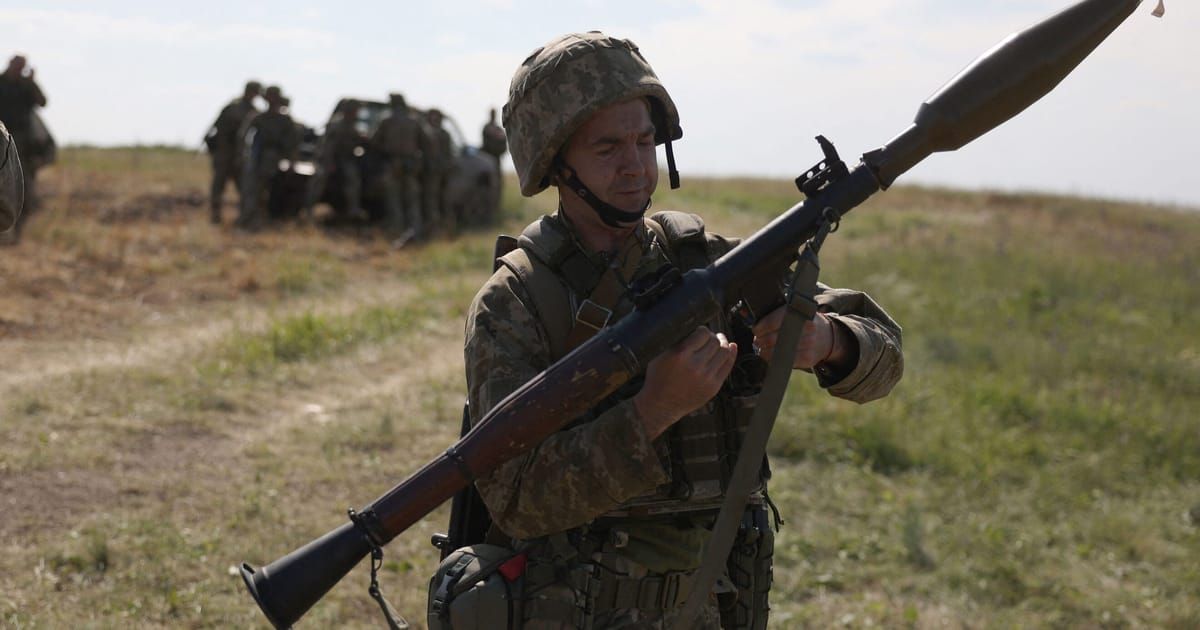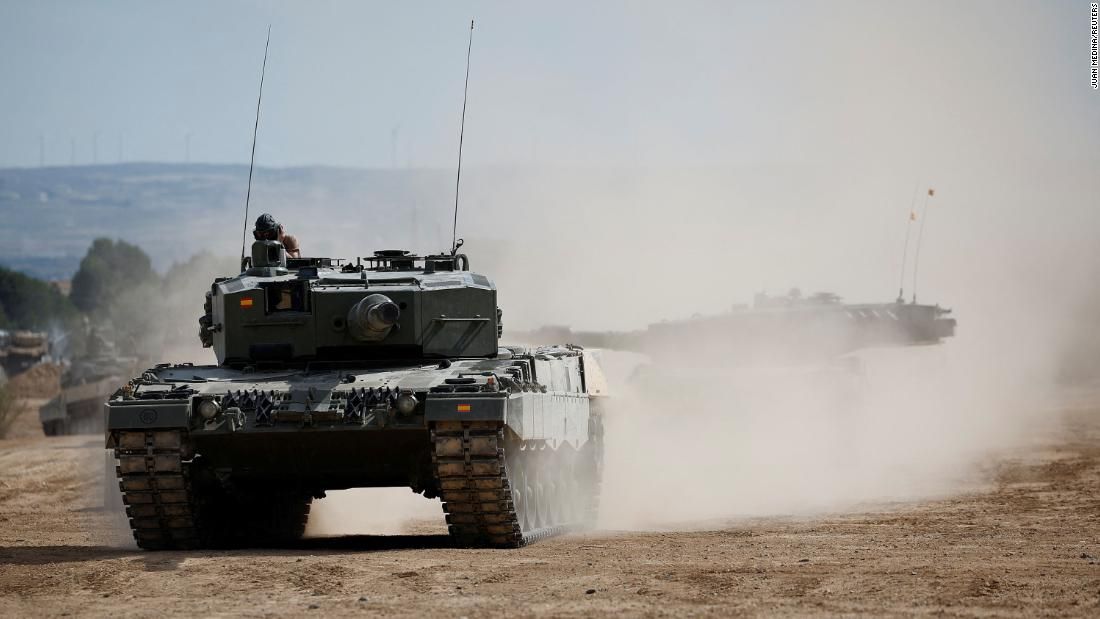Ukraine’s long war and the importance of patience
Press play to listen to this article Voiced by artificial intelligence.
Jamie Dettmer is opinion editor at POLITICO Europe.
Wars don’t run according to political timetables. And in the lead-up to Ukraine’s counteroffensive, President Volodymyr Zelenskyy and his top aides strove to explain this reality to both nervous allies, impatient for military progress, and their own people, eager for the big counterattack to kick off and hear good news from the front lines.
In the run-up to the long-awaited counteroffensive, which started to unfold last week — later than most anticipated — Ukrainian Minister of Defense Oleksii Reznikov was worried that expectations were “definitely overheated.” “Everyone wants another win,” he said, cautioning allies to temper their hopes, so as to avoid subsequent disappointment.
The worry here is that falling short of expectations might lead to a reduction in international military assistance and renewed, often oblique, pressure to engage with Moscow in negotiations. “They want the next victory. It’s normal, these are emotions,” Reznikov added.
But impatience for a decisive blow against Russia stems not just from emotion but from political calculations too.
A long war risks Western fatigue, the depletion of arsenals and an erosion of unity — especially with China, Brazil and South Africa touting dubious “peace” plans. And despite public promises to back Ukraine for “as long as it takes,” earlier this year Washington officials warned counterparts in Kyiv that they needed to make major battlefield gains soon, while weapons and aid from the U.S. and European allies are still surging.
With the U.S. heading into what’s likely to be an exceptionally torrid and combustible presidential election season — to say the very least — the high level of security and economic assistance from Congress might be hard to maintain, they warned. And according to Ukrainian lawmakers, in recent talks with U.S. State Department and National Security Council officials, queries regarding future commitments and asks were batted away, with the response often being, “let’s see how the counteroffensive goes.”
Former Deputy Prime Minister Ivanna Klympush-Tsintsadze told POLITICO these talks left her feeling anxious about the “continuation of the same level of U.S. support to Ukraine after this financial year” — which, for the U.S. federal budget, is September.
Likewise, there are also signs of war-weariness and wariness in Europe, both among politicians and the public, with Mykhailo Podolyak, an adviser in Zelenskyy’s office, complaining this week: “I understand that sitting thousands of kilometers away from Ukraine you can talk about ‘geopolitics,’ ‘settlement’ and the undesirability of escalation for months. And allow the rampage of the ‘Russian world.’”
Tellingly, even in Poland — one of Ukraine’s staunchest allies — the attitude toward Ukrainian war refugees is deteriorating. According to a survey by researchers from the University of Warsaw and the Academy of Economics and Humanities, in the past five months, the percentage of those who strongly support helping refugees dropped from 49 percent to 28 percent.
So, the political clock is ticking — and not necessarily matching the tempo of war.
Zelenskyy has had to pull off a difficult balancing act in recent weeks, holding out the prospect of delivering a decisive blow against Russia to shore up Western confidence and optimism and keep equipment and weapons flowing, while also underscoring that the counteroffensive most likely won’t be able to achieve the stunning quick success of last autumn’s push in Kharkiv.
Ukrainian President Volodymyr Zelensky | Alexey Furman/Getty Images
Triggering a cascading collapse of Russia’s defenses and a pell-mell rout, the success in Kharkiv helped keep Western allies on side, but it also unhelpfully colored expectations, adding to the hype surrounding the current counteroffensive, which Kyiv has been keen to calm. However, Ukrainian officials are acutely aware of Western fears about a long-drawn out war of attrition.
But Ukraine also doesn’t want to be pushed into any hasty moves that could result in serious and costly mishaps, which might then undermine military morale or knock Western hopes and have major geopolitical repercussions, a senior Ukrainian military official told POLITICO on condition of anonymity. “This is not like Kharkiv,” he said. “We must be cautious. The Russians have been learning and preparing, and their defensive lines are formidable — we don’t have men to waste, nor equipment. Progress will have to be incremental.”
And incrementalism is the new watchword.
In his nightly address, Zelenskyy noted on Monday that “the battles are fierce, but we are moving forward, and this is very important. The enemy’s losses are exactly what we need.”
Similarly, according to Ben Hodges, a former commander of the U.S. army in Europe, this “offensive is incredibly important for Ukraine’s future.” “Kyiv’s top military leadership has, to date, followed the conservative strategy of eroding Russian formations over time, gaining ground incrementally, avoiding major risks and limiting Ukrainian casualties as much as possible,” he wrote for the Center for European Policy Analysis.
“The offensive has clearly started, but not I think the main attack. When we see large, armored formations join the assault, then I think we’ll know the main attack has really begun,” he added.
Even though the main action is still to come, however, as Zelenskyy highlighted, the going is clearly tough.
And his Deputy Minister of Defense Hanna Maliar made this even clearer, saying on Telegram: “The enemy is doing everything to keep the positions captured by him. Actively uses assault and army aviation, conducts intense artillery fire. During the offensive, our troops encounter continuous minefields, which are combined with anti-tank ditches. All this is combined with constant counterattacks by enemy units on armored vehicles and the massive use of anti-tank guided missile and kamikaze drones.”
“The fighting so far has been tough,” agreed Jack Watling, an analyst at the Royal United Services Institute. Watling, who has conducted operational analyses for Ukraine’s General Staff, noted that Ukraine is aware it can’t adhere “to some fixed timeline,” and it’s trying to be methodical and entice “the Russians to commit their reserves, moving troops from the third defense line to bolster sectors under pressure. Once these troops are pulled forwards, it will become easier to identify the weak points in the Russian lines .”
After these weak spots appear — if they do — according to Watling, speed will then be of the essence . When Ukraine has maximized “the probability of a breach,” the main attack can then begin, and “the offensive will either achieve a breakthrough or fail.” T he question will then be whether Ukraine can funnel its forces quickly into the breaches as they emerge .
Ukrainians believe they can, and will, deliver a powerful blow with the brigades trained by NATO militaries and supplied by Western allies. And officials in Kyiv believe they can do better than the “moderate territorial gains” forecast by the Pentagon, according to leaked classified U.S. intelligence documents.
Source: POLITICO Europe


